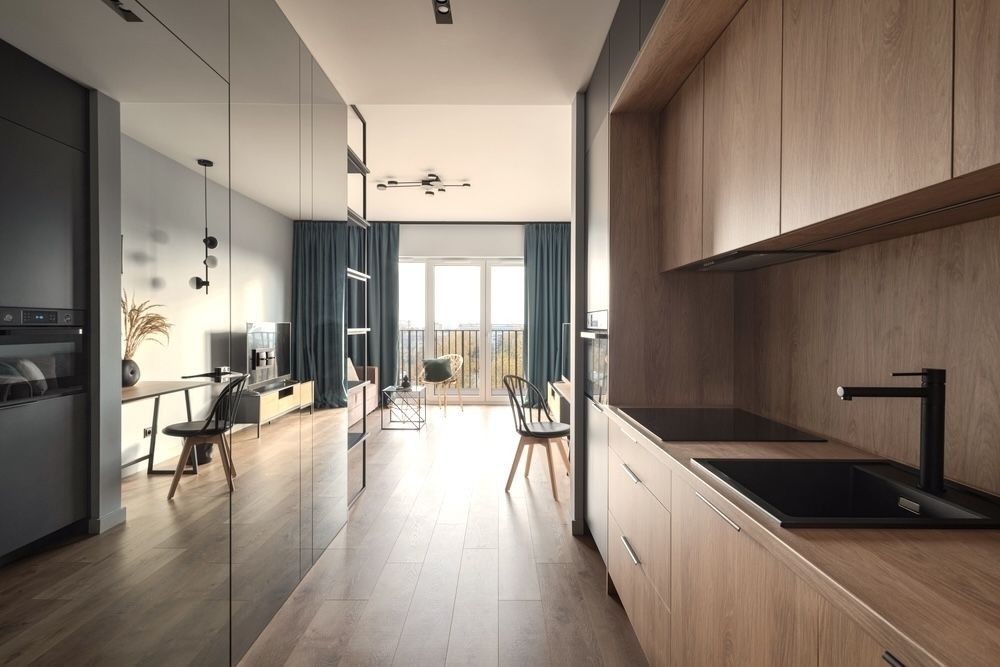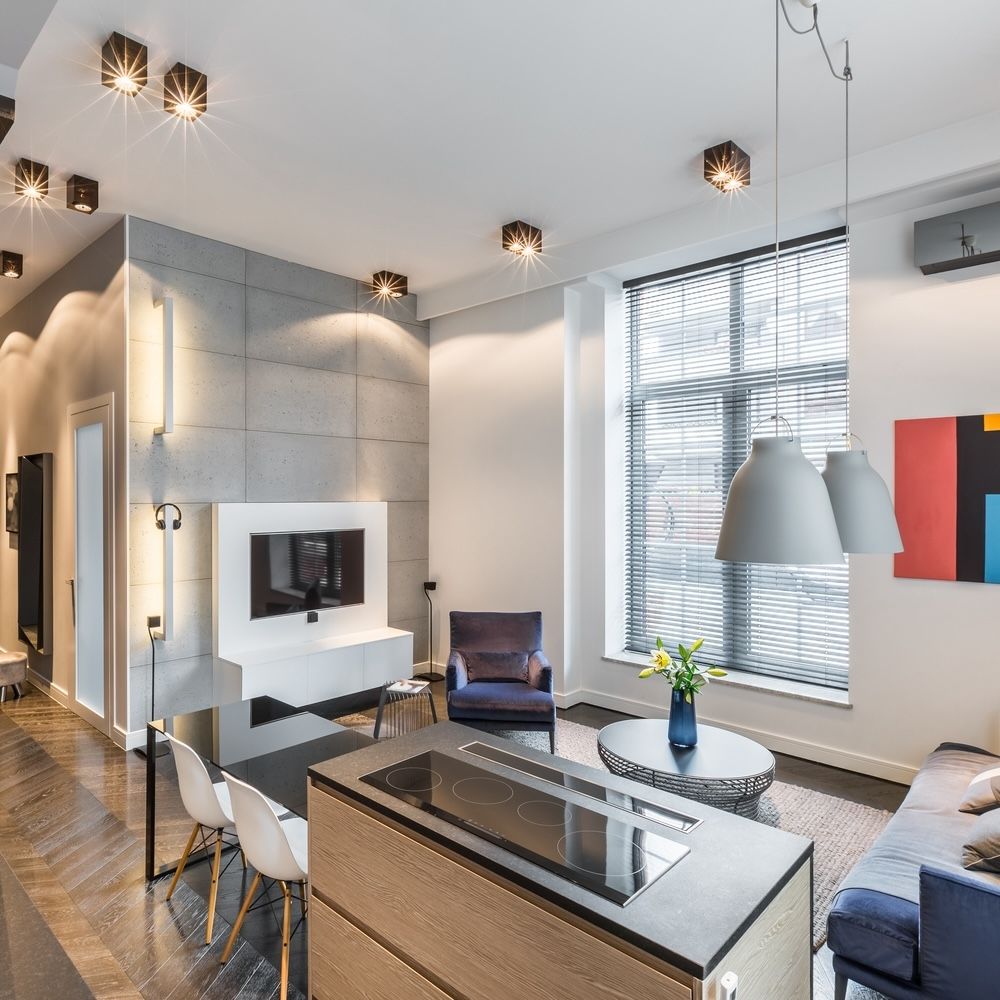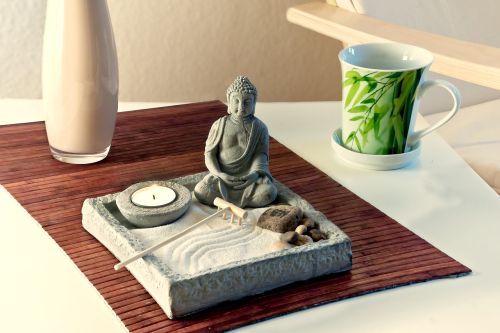Maximizing Small Spaces: Creative Solutions for Compact Living

As urbanization continues to reshape the way we live, more people are gravitating towards smaller homes and apartments. Compact living has become a popular trend, not only for its affordability but also for its ability to offer a simpler, more sustainable lifestyle. However, with limited square footage comes the challenge of designing spaces that are both functional and stylish. Whether you're living in a tiny studio apartment, a cozy urban loft, or a downsized family home, making the most of every inch is key to creating a comfortable and visually appealing environment.
In recent years, the trend of "tiny living" has taken the design world by storm, with people actively seeking out creative solutions to maximize their small spaces. Online searches for terms like "how to maximize small spaces," "small apartment design ideas," and "space-saving furniture" have spiked as more people look for ways to transform their homes into functional, efficient, and aesthetically pleasing havens. This growing interest is driven by a combination of rising housing costs, environmental concerns, and a desire for more minimalistic lifestyles.
The Shift Toward Compact Living
The shift toward compact living is not just a passing trend but a reflection of changing lifestyles and environmental consciousness. In fact, according to recent studies, the average size of new homes in the U.S. has decreased by approximately 10% over the last decade, with a significant portion of homebuyers opting for smaller, more affordable properties. This downsizing trend is not limited to the U.S.; it is a global phenomenon that reflects a broader movement towards minimalism, sustainability, and urban living.
For many, compact living is not about sacrificing comfort or luxury but rather about making thoughtful design choices that maximize space without compromising on style or functionality. With the right strategies, even the smallest of spaces can be transformed into a home that feels open, organized, and welcoming. This is where the magic of small-space design comes into play. By incorporating space-saving solutions such as multifunctional furniture, vertical storage, and smart lighting, homeowners and renters alike can create environments that are both efficient and visually stunning.
Key Strategies for Maximizing Small Spaces
1. Multifunctional Furniture: The Ultimate Space-Saver
One of the most effective ways to maximize space in a small home is by investing in multifunctional furniture. This type of furniture is designed to serve more than one purpose, making it ideal for compact living spaces where every square inch counts. For example, a sofa bed can double as both a seating area and a sleeping space, while an extendable dining table can be used for both everyday meals and larger gatherings.
Multifunctional furniture has become increasingly popular in recent years, with online searches for terms like "space-saving furniture for small apartments" and "multifunctional furniture ideas" on the rise. According to interior design experts, incorporating multifunctional furniture into your home can free up as much as 30% of your living space, allowing you to use your space more efficiently. Additionally, this type of furniture often features hidden storage compartments, which can help reduce clutter and keep your home looking neat and organized.
When choosing multifunctional furniture, it's important to consider both form and function. Look for pieces that are not only practical but also stylish, as they will play a central role in the overall aesthetic of your space. Opt for furniture with clean lines and neutral colors, as these tend to work well in small spaces by creating a sense of openness and airiness. For example, a fold-out desk that can be tucked away when not in use is perfect for small apartments, allowing you to maintain a work-from-home setup without taking up valuable living space.

2. Vertical Storage: Making the Most of Your Walls
In small spaces, floor space is often at a premium, which is why vertical storage solutions are essential. By utilizing your walls, you can create additional storage space without encroaching on your living area. Tall shelving units, wall-mounted storage racks, and hanging organizers are all excellent options for maximizing vertical space.
Online searches for "vertical storage ideas" and "wall-mounted storage for small spaces" have become increasingly common as people look for ways to declutter their homes while keeping essential items within reach. Vertical storage not only helps you keep your home organized but also creates the illusion of height, making your space feel larger than it actually is. This is particularly important in small apartments and homes where every inch of space matters.
For example, consider installing floating shelves in your kitchen to store dishes, cookware, and pantry items. In the bedroom, wall-mounted organizers can be used to store clothing, accessories, and personal items, freeing up valuable closet space. In living rooms, tall bookcases or shelving units can provide ample storage for books, decor, and other items while drawing the eye upward, creating a sense of spaciousness.
In addition to shelving and storage racks, consider incorporating vertical storage solutions into your furniture. For example, a bed with built-in drawers underneath can provide extra storage space for clothing and linens, while a wall-mounted desk can free up floor space in a small home office.

3. Mirrors for Depth and Light: The Illusion of Space
Mirrors are one of the most effective tools for making small spaces feel larger and more open. By reflecting light and creating the illusion of depth, mirrors can visually expand your space and make it feel more airy and inviting. This is why mirrors are a popular choice in small-space design, with searches for "how to use mirrors to make a room look bigger" and "best mirror placement for small rooms" consistently trending online.
The key to using mirrors effectively in small spaces is to place them strategically. For example, placing a large mirror on a wall opposite a window can reflect natural light into the room, brightening up the space and making it feel more open. Additionally, mirrors can be used to create the illusion of depth, making narrow or cramped rooms feel more spacious.
According to a study published in Architectural Digest, using larger mirrors, particularly on walls that face windows, can increase the perceived size of a room by up to 40%. This makes mirrors an essential design element for anyone looking to maximize their small living space. To achieve the best results, opt for mirrors with clean, simple frames that blend seamlessly into your decor, rather than ornate or bulky designs that can overwhelm the room.
For even more impact, consider using mirrored furniture or decor accents, such as mirrored coffee tables or wall art. These reflective surfaces can help bounce light around the room, further enhancing the sense of space and openness.

4. Clear, Open Layouts: The Power of Minimalism
One of the most important principles of small-space design is to keep the layout as open and uncluttered as possible. In a small home or apartment, clutter can quickly make a space feel cramped and chaotic, which is why it's essential to embrace a minimalist approach to furniture and decor. Online searches for "minimalist home design" and "how to declutter a small space" reflect the growing interest in creating open, organized spaces that feel calm and inviting.
To create a clear, open layout, start by removing any unnecessary furniture or decor that takes up valuable floor space. Instead, focus on incorporating a few key pieces that serve both functional and aesthetic purposes. For example, a sleek, low-profile sofa can create a comfortable seating area without overwhelming the room, while a minimalist coffee table can provide a central gathering spot without taking up too much space.
It's also important to keep pathways clear and ensure that there is enough space to move around comfortably. In small spaces, traffic flow can be easily disrupted by bulky furniture or cluttered surfaces, which is why it's essential to prioritize open areas where people can move freely. Additionally, keeping surfaces such as countertops, tables, and shelves clutter-free can make your space feel larger and more organized.

5. Smart Lighting: Brightening Up Your Space
Lighting plays a crucial role in the overall look and feel of a space, and in small homes, it can make all the difference in creating a warm, inviting atmosphere. Proper lighting can not only brighten up your space but also make it feel larger and more open. This is why online searches for "best lighting for small spaces" and "how to brighten a small room" have become increasingly popular as people look for ways to enhance their living environments.
When it comes to lighting in small spaces, it's important to use a combination of different lighting sources to create layers of light. Ambient lighting, such as ceiling lights or wall sconces, provides overall illumination, while task lighting, such as table lamps or under-cabinet lighting, offers focused light for specific activities. Accent lighting, such as floor lamps or string lights, can be used to highlight decor or architectural features, adding depth and interest to your space.
In small spaces, it's also important to maximize natural light whenever possible. Avoid using heavy, dark curtains, which can block out light and make the room feel smaller. Instead, opt for sheer or light-filtering window treatments that allow natural light to flow into the space. If your home has limited access to natural light, consider using mirrors or reflective surfaces to bounce light around the room and create a brighter, more open atmosphere.

Why Compact Living is Sustainable: A Greener Approach to Modern Living
Compact living isn't just about making the most of limited space—it's also a movement toward a more sustainable and environmentally friendly lifestyle. As concerns about climate change and resource depletion grow, many people are searching for ways to reduce their carbon footprints, and living in smaller spaces is one effective strategy. Searches for terms like "sustainable small home living" and "eco-friendly design for small spaces" are on the rise as more individuals look to align their lifestyles with sustainability principles.
One of the primary environmental benefits of compact living is reduced energy consumption. Smaller homes require less energy to heat, cool, and light, which translates to lower utility bills and a smaller carbon footprint. In fact, a study conducted by the U.S. Green Building Council found that homes under 1,500 square feet use up to 20% less energy compared to larger homes, making them significantly more energy-efficient. This energy savings is not just good for the environment; it’s also beneficial for homeowners' wallets.
Additionally, compact living often goes hand-in-hand with minimalism, a lifestyle choice that encourages people to buy and consume less. By living in a smaller space, individuals are naturally limited in the amount of furniture, decor, and possessions they can accumulate. This minimalist approach not only reduces waste but also promotes a more intentional and mindful way of living. People are becoming more conscious of the products they buy, opting for sustainable, high-quality items that will last for years rather than cheap, disposable goods.
Another way compact living supports sustainability is by encouraging urbanization and higher-density living. As more people move into smaller apartments and urban centers, there's less need for suburban sprawl, which consumes large amounts of land, water, and energy. High-density living also promotes the use of public transportation, cycling, and walking, all of which have lower environmental impacts than driving a car.
Moreover, many small-space dwellers are finding creative ways to incorporate eco-friendly practices into their homes. For example, vertical gardening has become a popular trend among those living in urban apartments, allowing them to grow their own food in small outdoor spaces or even indoors. Searches for terms like "indoor vertical gardening for small spaces" reflect this growing interest in combining compact living with sustainability.
Finally, the design and construction of smaller homes are often more environmentally friendly. Tiny homes, for instance, require fewer building materials, which reduces the demand for resources like timber, steel, and concrete. Many small homes are also built with sustainable materials, such as reclaimed wood or recycled metal, further reducing their environmental impact.
Compact living not only offers a practical solution for dealing with limited space but also promotes a more sustainable and eco-conscious lifestyle. By reducing energy consumption, embracing minimalism, and supporting higher-density living, people who choose smaller homes are making a positive impact on the environment and contributing to a greener future.
Embrace Compact Living with Creativity and Style
Maximizing small spaces is both an art and a science, requiring a balance of creativity, functionality, and thoughtful design. Whether you're living in a tiny studio apartment, a cozy urban loft, or a downsized family home, the key to making the most of your space is to adopt smart design strategies that enhance both the aesthetics and practicality of your living environment.
From multifunctional furniture to vertical storage, mirrors, and smart lighting, there are countless ways to transform a small space into a stylish and efficient home. Each of these solutions plays a vital role in creating an environment that feels open, organized, and inviting. As you embrace compact living, you’ll not only enjoy the benefits of a more functional home but also contribute to a more sustainable and eco-friendly way of life.
In an age where sustainability, minimalism, and affordability are more important than ever, compact living offers a compelling alternative to traditional homeownership. By making the most of every square inch, you can create a living space that reflects your personal style while also supporting a greener and more intentional lifestyle.
Whether you're searching for "small apartment design ideas," "space-saving solutions," or "how to make a room look bigger," the strategies outlined in this article provide practical, data-backed solutions for anyone looking to maximize their small living space. So, embrace the challenge of compact living with creativity, and discover just how big even the smallest spaces can feel.
Check more articles on our blog

Learn 7 Practical Mason Jar Uses For Your Kitchen

Useful Guide To Home Decluttering And Cleaning

Tips For Shoe Organization To Keep Them In Great Condition
